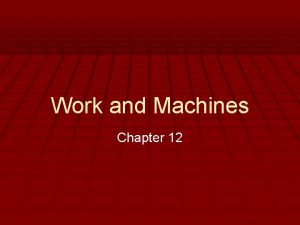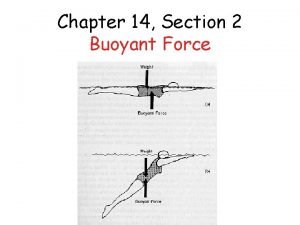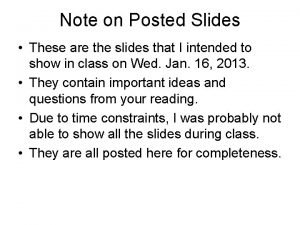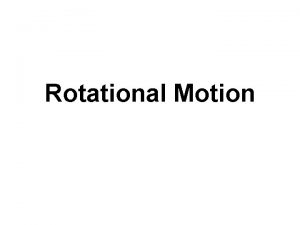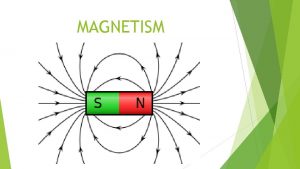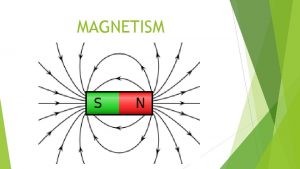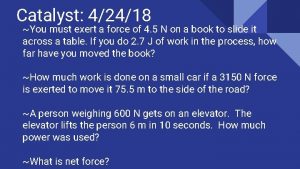So every time you exert a force on













- Slides: 13

So every time you exert a force on an object, you give it some kind of energy, right?

According to our chalksmashing lab, Work = Force x displacement But only if the force is applied in a direction parallel to the object’s displacement, and only if the force applied is an external one—not a force one system object exerts on another.

Why such a silly definition of work? • Because with this definition, whenever you do work on an object you change its kinetic energy. And you change it by the same amount as the amount of work you did on the object. • Which leads us to the work-energy theorem; total work done on an object = change in kinetic energy of the object • Which means kinetic energy is the stuff you change when you do work on an object.

Units of Work: •

Practice Problem: A tired squirrel (mass of 1 kg) does push-ups by applying a force to elevate its center-of-mass by 5 cm. Estimate the number of push-ups that a tired squirrel must do in order to do approximately 5. 0 Joules of work. Each push-up requires (1 kg)(9. 8 m/s 2)(. 05 m) = 0. 5 Joules, so 5. 0 Joules of work would be 10 pushups.

Work or no work? • Pushing against a wall? No displacement so no work.

Work or no work? • Pushing a box across the floor at constant speed? Pushing force does positive work that is balanced by the force of friction (so speed is constant; no acceleration as forces are balanced). Force of friction does negative work, so total work on box is 0 and there is no change in KE of the box.

Work or no work? • Lifting at constant speed? Lifter of box does positive work while Earth does negative work so total work done on box is 0 with no change in KE. BUT: If system includes object and Earth, then Earth can’t do work since it’s part of the system. Then lifter does positive work which does increase energy of the system. Lifter gives KE to box which is transferred after lifting to PE. Sum of PE + KE is constant.

Work or no work? • Object in free fall? Ignoring air resistance: Earth does negative work on the object (downward direction). KE increases by amount of W = F x D = mgh=1/2 mv 2

Work or no work? • Does a centripetal force do work? No work because the force is always perpendicular to the displacement.

Work done on a system increases the energy of a system. Work done by a system decreases the energy of a system.

Types of Energy Gravitational PE = mgh (Ug) Elastic PE (Us) Kinetic Energy = ½ mv 2 Internal Energy (ΔU)

Practice Problem • When Albert hits a 46 -g golf ball with a club, the ball picks up 43 J of kinetic energy. A constant force of 2300 N is applied to the ball while the ball and the club are in contact. Over what distance is the club in contact with the ball? W = F x d, so d = W/F = 43 J/2300 N = 0. 019 m
 Section 1 work and machines answer key
Section 1 work and machines answer key What is the upward force that fluids exert on all matter
What is the upward force that fluids exert on all matter A boxer cannot exert much force
A boxer cannot exert much force Oscillatory motion
Oscillatory motion Sixty percent of the time it works every time
Sixty percent of the time it works every time How much time do you spend _______ tv every day?
How much time do you spend _______ tv every day? Every nation and every country has its
Every nation and every country has its Empower every person and organization
Empower every person and organization Every knee shall bow every tongue confess
Every knee shall bow every tongue confess Every rotarian every year
Every rotarian every year Every nation and every country
Every nation and every country Every picture has a story and every story has a moment
Every picture has a story and every story has a moment Every child every day
Every child every day The willingness to exert high levels of effort
The willingness to exert high levels of effort
